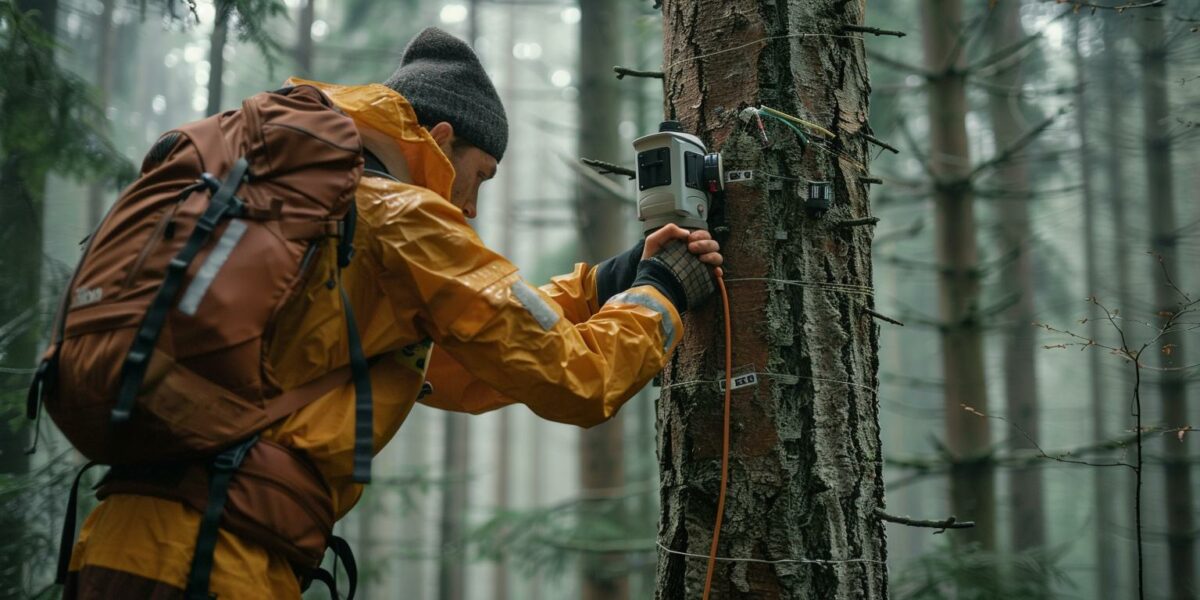The Unexpected Role of Tree Bark in Methane Absorption
Our latest research reveals that tree bark in forests globally absorbs methane, a powerful greenhouse gas. This discovery could revolutionize our understanding of how trees help combat climate change. Previously, we knew trees sequester carbon dioxide (CO₂) through photosynthesis, but now we see they also tackle methane.
Methane is a significant contributor to global warming, responsible for about a third of the observed climate warming since preindustrial times. Its concentrations in the atmosphere have been rising rapidly, especially in the past two decades, posing a severe threat to our climate.
Compared to CO₂, methane traps much more heat in the atmosphere but has a shorter lifetime of around ten years. This means that any changes in methane sources or sinks can have rapid effects on our climate, making methane reduction a quick win in the climate battle.
Our study discovered that forests have an underappreciated role in methane removal. By enhancing this natural process, we could significantly mitigate climate change. This newfound understanding emphasizes the critical importance of protecting and expanding forested areas.
Researching Methane Exchange in Forests
We focused our study on tree bark, a surface previously overlooked for its climate contribution. Using a simple plastic chamber connected to a laser-based methane analyzer, we measured methane exchange on hundreds of trees across various global climates, from the Amazon to Sweden.
Initially, we sought to detect methane emissions from tree trunks. While some trees emit small amounts, the real surprise came when we found that higher up the trunks, trees were taking up methane from the atmosphere, with this uptake increasing higher up the tree.
To determine the global significance of this process, we calculated the total area of tree bark using terrestrial laser scanning. We found that if all the world’s tree bark were laid flat, it would cover Earth’s entire land surface, indicating a vast potential for methane absorption.
This research underscores the importance of understanding methane sinks and enhancing their capacity. By planting trees in the right places and preserving existing forests, we could draw more methane from the atmosphere, aiding in climate mitigation.
Implications for Climate Policy and Forest Management
Our cautious estimate suggests that trees absorb between 25 and 50 million tonnes of atmospheric methane annually, with tropical forests being the most effective. This makes forests 7%-12% more beneficial for the climate than previously credited.
Unlike soil, which has a stable area, forests are dynamic, expanding and contracting through deforestation and reforestation. These changes can significantly influence atmospheric methane levels. Reforestation efforts could thus become a crucial strategy in methane management.
There are several ways to improve methane uptake in forests:
- Selecting tree species that excel in methane absorption.
- Modifying tree bark microbial communities.
- Implementing innovative plantation forestry techniques.
Such strategies could enhance the natural methane sink capabilities of forests, offering new avenues for climate action.
The Broader Impact and Future Directions
Decarbonizing our global economy and energy systems remains crucial, but the ability of tree bark to absorb methane provides an additional nature-based solution to climate change. This discovery opens up new possibilities for enhancing methane removal through strategic forest management.
Incentives for preserving natural forests and preventing deforestation could be strengthened. Reforestation projects might become more economically viable under carbon offset schemes that consider methane absorption.
This evidence underscores the importance of trees and forests in our climate system. By recognizing and enhancing their role in methane absorption, we can take significant steps toward a more sustainable future.
Our understanding of these valuable ecosystems continues to evolve, highlighting the need for ongoing research and conservation efforts. Protecting and expanding forests could be a game-changer in our fight against climate change.



bootsluminary
How do we measure the methane absorption rate of different trees?
Hannah
Does this mean we should focus on tropical reforestation more?
Genesis
Thanks for the info, very enlightening! 😊
adrian
Does tree age affect its methane absorption capabilities?
HarmonySerenity
Wait, does this mean cutting down trees is even worse than we thought?
Addison
Great research! This gives me hope for our planet.
Autumn
Could this mean we need to plant more trees in urban areas?
evelyn
Is this the same process as photosynthesis?
Henry
How do we know which tree species are best at absorbing methane?
nathan
Wow, I had no idea tree bark could absorb methane! 🌳